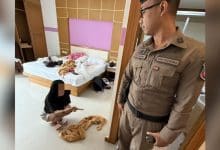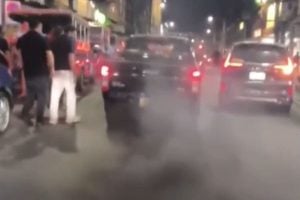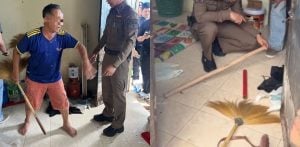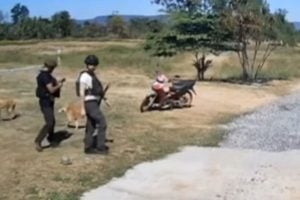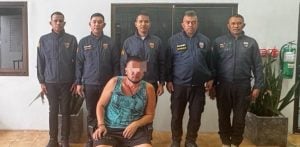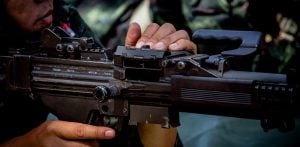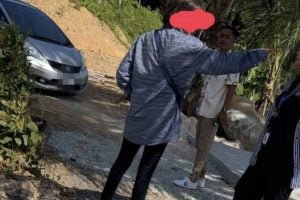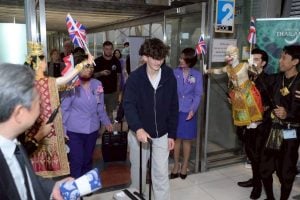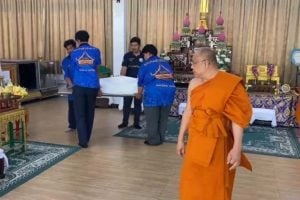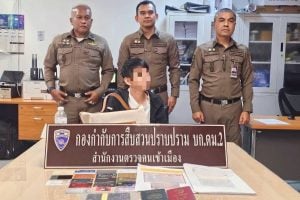The tragedy of Babi Yar: An assembly line of death in Kyiv

Anna Furman has been able to identify around 28,300 names so far. “In the past year, more than 1,000 new names were added,” the project manager at the Ukrainian Babi Yar Memorial Center told DW.
But Furman and her colleagues still have a lot of work to do. Exactly 80 years ago, on September 29 and 30, 1941, the Nazis shot dead more than 33,000 people in occupied Kyiv, most of them Jews. It was an assembly line of death.
“Entire families were killed. The youngest victim we were able to identify was an infant, just two-days old,” Furman said. All in all, there are estimates that between 70,000 and 100,000 people were killed prior to liberation in 1943. The dead included Sinti and Roma, Communists and prisoners of war.
The location Babi Yar, also known as Babyn Yar, is often mentioned in the same breath as Auschwitz-Birkenau and is the Ukraine’s most famous Holocaust site. There were many such places during World War II, but Babi Yar has a special place in history, partly because the act of remembering the victims was suppressed and concealed for decades.
What happened at Babi Yar?
On September 19, 1941, about three months after the invasion of the Soviet Union, Nazi troops marched into Kyiv, the capital of Soviet Ukraine. A few days later, resistance fighters blew up several buildings in the city center where the occupiers had taken up residence. The Nazis used this as a pretext to launch a massacre. Leaflets were distributed throughout the city of over a million inhabitants, calling on Jews to appear at an intersection on the outskirts of Kiev at 8:00 a.m. on September 29, 1941. They were to bring money and warm clothing. Anyone who refused to come would be shot.
The people were ordered to take off their clothes. Then they were driven to the edge of the ravine and, in assembly line fashion, shot. Loud music and a plane circling overhead were supposed to drown out the screams and shots. Responsible for the massacre was the so-called Sonderkommando 4a of Einsatzgruppe C, which participated in the Holocaust in Eastern Europe. It was led by SS officer Paul Blobel, who was also involved in other similar operations in Ukraine. He was convicted and executed in one of the Nuremberg trials. The local “auxiliary police” also participated in the killing of Jews. It is a chapter of Ukrainian history that has long been suppressed, like the massacre itself.
Suppressed and forgotten
For a long time after World War II, nothing in the Soviet Union commemorated the tragedy. The award-winning Ukrainian film director Sergei Loznitsa, who recently made a documentary about Babi Yar, blames it on antisemitism. “The Soviet Union was an antisemitic state,” the filmmaker told DW. All rulers since Stalin have been antisemitic, he said.
Loznitsa remembers that during his childhood the site of the massacre was filled in and turned into a park. And bordering the park were prefabricated buildings. A Jewish cemetery there was also destroyed around that time.
“I remember as a child walking through the park after going swimming and stumbling over strange stones with words in an unknown language,” he said. “I had no idea at the time that these were remains of Jewish graves.” It wasn’t until 1976 that the first memorial to the victims of the massacre was even erected. But there was no mention of Jews.
More was done following independence beginning in 1991 but it wasn’t until a few years ago that a memorial worthy of its name was created. There is now also a symbolic synagogue. But parts of the population still struggle with coming to terms with the past. “Unfortunately, I don’t see an ardent desire among my countrymen to preserve the memory of this tragedy,” Loznitsa said. In a June poll, 44% of respondents said they didn’t know where the Babi Yar memorial was located.
Controversial memorial center
A new private memorial, which is still under construction, triggered controversy early on. Critics complained that the site’s artistic director and some of its financial backers were from Russia and that efforts to portray Ukrainian citizens as Nazi collaborators and murderers of Jews were nothing more than Russian propaganda.
Loznitsa has no time for that sort of thinking. “It amazes me, because instead of building something up, something is being torn down.” Collaboration is a “difficult subject” and was prevalent everywhere, but people should know the truth, he said.
For project director Anna Furman it is important to see the human fate beyond just the numbers of the victims in Babi Yar: “We are beginning to understand our own history better.” At that time, almost the entire Jewish population of Kyiv was wiped out, she said. That changed the city and should never be forgotten.
SOURCE: DW News
Latest Thailand News
Follow The Thaiger on Google News:
